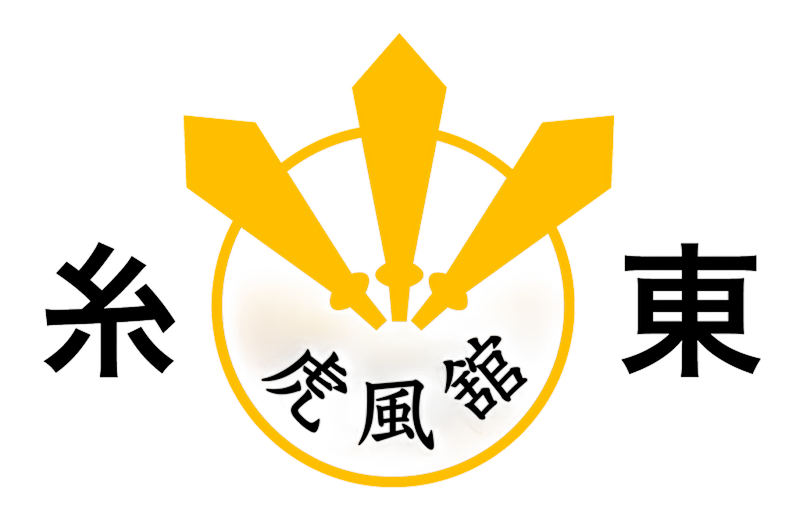How Can We Help?
Niseishi
skrevet den
sidst opdateret
afKasper Rasmussen
Du er her:
Print
Email
Kilde
“Kofukan Standardised Katas – Part 2”, K Tomiyama, 8th Dan Tasshi, January 2014
Instruktion
Åbning
- Musubi-dachi and Rei (bow)
- Naotte position
- Announce the name of the Kata
Gennemgang
- Move right foot back and make left Moto-dachi stance in Shomen position. At the same time, perform left Chudan Sukui-uke block. Right fist is pulled back to side.
- Perform right Chudan Gyaku-zuki punch. Left hand is placed on top of right upper arm palm touching the upper arm.
- Slide forward and regain left Moto-dachi stance in Shomen position. At the same time, close left hand into fist and push left forearm forward in horizontal position palm facing down. Right fist is pulled back to side.
- Move left foot and turn clockwise to face rear in right Moto-dachi stance in Shomen position. At the same time, pull left fist back to side, palm up. Right fist remains at side.
- Perform Morote-zuki punch. (Perform left Jodan Gyaku-zuki punch and right Gedan Ura-zuki punch simultaneously.)
- Lift right knee and bring both forearms in front of chest in vertical position, palms facing body.
- Land right foot forward from heel and move left foot forward (sliding action) to make right Nekoashi-dachi stance in Shomen position. At the same time, perform Kakiwake block (double Kote-uke blocks).
- Step left foot to left (original right) and make left Zenkutsu-dachi stance in Shomen position. At the same time, perform left Jodan Age-uke block. Right fist is pulled back to side.
- Perform right Chudan Tate-empi (vertical elbow) strike. (Kiai!) Left fist is pulled back to side.
- Move right foot and turn clockwise to face rear (original left) in right Moto-dachi stance in Shomen position. At the same time, perform right Chudan Kakete block. Left fist remains at side.
- Perform right Chudan Mae-geri kick.
- Land back to regain the same right Moto-dachi stance in Shomen position. At the same time, perform left Chudan Gyaku-zuki punch. Right fist is pulled back to side.
- Move left foot and turn anti-clockwise to face rear (original right) in left Motodachi stance in Shomen position. At the same time, perform left Chudan Kakete block. Right fist remains at side.
- Perform left Chudan Mae-geri kick.
- Land back to regain the same left Moto-dachi stance in Shomen position. At the same time, perform right Chudan Gyaku-zuki punch. Left fist is pulled back to side.
- Move left foot back and make Heiko-dachi stance in Shomen position. Pull right fist back to side. Left fist remains at side.
- Step right foot towards right 45-degree direction (original right rear 45 degrees) and make right Zenkutsu-dachi stance in Shomen position. At the same time, press forward with both palms fingertips pointing up, left Jodan and right Gedan.
- Move left foot and turn anti-clockwise to face rear (original left 45 degrees) in left Zenkutsu-dachi stance in Shomen position. Left arm moves with body so that, at the end of turning, palm faces the new opponent. Right hand stays at the same place but turns on the spot so that, at the end of turning, fingertips point forward.
- Swing right arm up and forward to point at opponent’s eyes with fingertips. Wrist and fingers are straight. At the same time, swing left arm down and back with straight wrist and fingertips.
- Move right foot forward and make Heisoku-dachi stance in Shomen position. At the same time, swing left arm up and forward and strike right palm with left back of hand.
- Move left foot back and make very low right Zenkutsu-dachi stance in Hammi position. At the same time, perform Kari-taoshi (sweep throw). Right hand pulls heel and left hand pushes knee of the opponent.
- Make both fists in to Nakataka-ippon-ken (middle finger one-finger fist) and pull them back to sides. Then perform Gedan Heiko-zuki punch (parallel punches). (Kiai!) Right punch is to throat and left punch is to solar plexus of the fallen opponent. (Alternatively, right to solar plexus and left to groin.)
- Move left foot and turn anti-clockwise to face rear (original right rear 45 degrees) in left Nekoashi-dachi stance in Hammi position. At the same time, perform left Chudan Haishu-uke block starting from right hip (under right arm). Right fist is pulled back to side.
- Step right foot forward and make right Zenkutsu-dachi stance in Shomen position. At the same time, perform right Chudan Tate-empi strike. Left fist is pulled back to side.
- Perform right Gedan Harai-uke block. Left fist remains at side.
- Perform left Chudan Gyaku-zuki punch. Right fist is pulled back to side.
- Move left foot and turn anti-clockwise to face original front in left Nekoashidachi stance in Hammi position. At the same time, perform left Chudan Haishuuke block. Right fist remains at side.
- Step right foot forward and make right Shiko-dachi stance in Ma-hammi position. At the same time, perform right Chudan Mawashi-empi strike on left palm.
- Keeping left palm at right elbow, perform right Gedan Harai-uke block.
- Move left foot and turn anti-clockwise to face original left rear 45 degree direction in left Nekoashi-dachi stance in Hammi position. At the same time, perform left Chudan Haishu-uke block starting from right hip (under right arm). Right fist is pulled back to side.
- Step right foot forward and make right Zenkutsu-dachi stance in Shomen position. At the same time, perform right Chudan Tate-empi strike. Left fist is pulled back to side.
- Perform right Gedan Harai-uke block. Left fist remains at side.
- Perform left Chudan Gyaku-zuki punch. Right fist is pulled back to side.
- Move right foot and turn anti-clockwise to face original front in left Moto-dachi stance in Shomen position. At the same time, pull left fist back to side, palm up. Right fist remains at side.
- Perform Morote-zuki punch. (Perform right Jodan Gyaku-zuki punch and left Gedan Ura-zuki punch simultaneously.)
- Bring left foot back to make Musubi-dachi stance in Shomen position. At the same time, bring hands to left hip and perform small Tomoe-uke block with small push.
- Naotte and Rei (bow).
Bunkai
Bunkai
Under udarbejdelse
Baggrund
Udviklet af
The most common of today’s versions are derived from Aragaki Seishō who lived in Okinawa from the mid-1800s, to the early 1900s.
Japansk titel med kanji
二十四歩
Betydning
Niseishi means “24” in Chinese. In introducing karate from Okinawa to Japan, Gichin Funakoshi changed the name of the kata from Okinawan Niseishi to Nijūshiho. Both names mean “Twenty-Four Steps”.
Historie
Nijushiho is included many styles syllabus including Shito ryu, Wado ryu, Shorinji ryu and Shotokan. Shorinji ryu version is very different and even more circular than most of the styles that use Niseishi.

